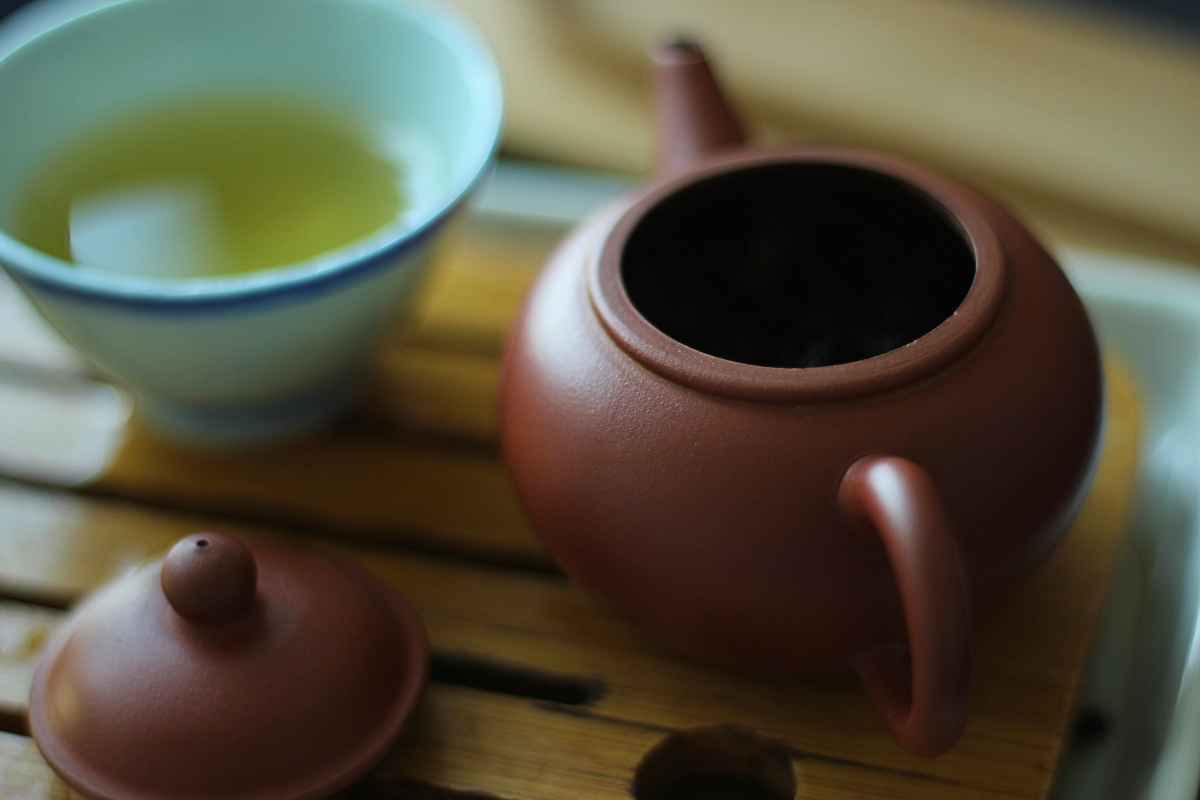A few weeks ago, Mei Leaf launched one of their new teas by doing a giveaway on Instagram. I took my chances and won a pack of Kaori Black. They sent the package a few days later and I got it in the mail earlier this week. I don’t have a dedicated Yixing teapot for black teas (yet), so I used my porcelain gaiwan during this session.
Have you considered subscribing to Tea Adventures? You can enter your email address in the sidebar and get updates whenever I publish a new article. You never have to miss an article again by joining our mailing list.
Kaori Black
The Kaori Black is a black tea from Japan. Yes, you read that right. Black tea from Japan is rather unusual because Japan is more famous for its exquisite green teas. That is one of the reasons it took Don and his team so long to find the right one. Most farmers in Japan are focused on producing green teas and sort of neglect other types of tea. This particular tea comes from Shizuoka in Japan. The cultivar that was used to make this tea is the Kaori Fuji cultivar, which is a hybrid of the famous Yabukita and the Inzatsu cultivars. This hybrid combines the best of both worlds to create a sweet tea with a satisfying body.
I mainly see medium and small leaves and some small stems as well. The leaves are mostly curled. The colour is black but I also spot several brighter spots here and there. The aroma is what sets this tea apart. I’m getting a fruity and subtle sweetness. It smells a bit like sweet lychee.
The colour of the wet leaves is brown instead of black. The leaves have opened and I see that it mainly consists of pieces and smaller leaves. The aroma is still pretty good. It’s a bit malty with a fruity and flowery undertone.
Tea Tasting
- Water 90°C
- 4g for a 90ml porcelain gaiwan
- 1 rinse
- 6 infusions
Don’t know where to buy tea online in Europe? I made a list of over 80 online shops and I keep updating it regularly. You can check it over here.
Infusions
Infusion 1 (20 sec): the liquor had a dark and rich brown colour. There is a maltiness but it’s immediately followed by flowery notes. I’m also experiencing a sharp edge, which is almost like a hint of lemon. The combination of these flavours is pleasant and the aftertaste is sweet and refreshing.
Infusion 2 (20 sec): the colour of this infusion is a bit darker. I made this infusion as long as the previous one because I was afraid that the maltiness would become too dominant. I made the right call because it’s still malty but it has more fruity notes to it. The sharp edge is gone and it’s even a tiny bit creamy.
Infusion 3 (25 sec): the maltiness from the previous infusions is gradually decreasing and the subtle notes become more noticeable. It’s fruity and even a bit sweet. I also feel that the lemon from the first infusion has returned, although only subtle. The aftertaste is really creamy!
Infusion 4 (30 sec): the colour is a lot lighter all of a sudden. The maltiness has disappeared and it’s really fruity now. I’m getting prominent notes of sweet lychee. It reminds me a bit of a high-quality Lapsang Souchong.
Infusion 5 (40 sec): this one is pleasant, soft and fruity. The aftertaste is even sweeter and fruitier.
Infusion 6 (50 sec): this one is not so different from infusion 5. It’s sweet, fruity and subtle.
Conclusion
I was pleasantly surprised by this one. I didn’t know what to expect and was rewarded with a fruity sweetness. I’m not a big fan of black teas but I thoroughly enjoyed this session. It started with a dominant maltiness but I felt there was more beneath the surface. From the 3rd infusion onwards, the fruity notes became more prominent and that was really enjoyable. In addition to this, I even experienced a creaminess during the aftertaste of infusion 3. It’s a complex tea that reminds me of a high-quality Lapsang Souchong (especially the fruity notes). Overall, a good session but if I have to choose, I prefer the later infusions over the first two.
If you want to experience this tea for yourself, click here to go to the Mei Leaf website.




